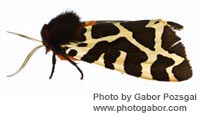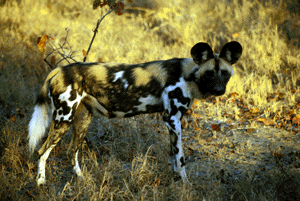Lowveld Wild Dog Project
 This page has been mothballed.
This page has been mothballed.
It is no longer being updated but we've left it here for reference.
|
|
|
|
|
|
GENERAL INFORMATION
 The African wild dog (Lycaon pictus) is a member of the Canid family that also includes the wolves, jackals, foxes and domestic dogs. Fossil evidence suggests that wild dogs broke away from the wolf-like stock between 2 - 5 million years ago and that they have been evolving along their own, separate lineage in Africa since then. As a result, they are a distinct species that occupy their own genus, Lycaon, and cannot interbreed with any other species.
The African wild dog (Lycaon pictus) is a member of the Canid family that also includes the wolves, jackals, foxes and domestic dogs. Fossil evidence suggests that wild dogs broke away from the wolf-like stock between 2 - 5 million years ago and that they have been evolving along their own, separate lineage in Africa since then. As a result, they are a distinct species that occupy their own genus, Lycaon, and cannot interbreed with any other species. - Wild dogs are thought to have had a wide distribution throughout the Africa continent south of the Sahara Desert. The species ranged through nearly all habitat types with the exception of the tropical rainforests of central and west Africa. A pack was even recorded in the snow on the top of Mt Kilamanjaro.
- Wild dogs are highly endangered and the last census, carried out in 1997, estimated that there were only 3000 - 5500 individuals remaining. They are extinct in 25 of the 39 African countries where they were known to once occur and only six countries currently support populations numbering more than 100 individuals; Botswana, Kenya, Tanzania, South Africa, Zambia and Zimbabwe.
The following are factors thought to have been causal in the dramatic decline of the wild dog population during the last century:
- Habitat loss and fragmentation - with the development of commercial ranching and the increasing human population in Africa, wild dogs and nearly all other African wildlife, have been forced into relatively small, isolated National Parks and game reserves.
- Persecution - Soon after the turn of the century, wild dogs were declared as vermin by colonial governments throughout most of Africa. Amazingly, wild dogs were even regarded as vermin and shot on National Park land until the 1970s.
- Disease - Wild dogs are highly susceptible to many diseases, particularly rabies and canine distemper.
- Competition - it is likely that large densities of spotted hyaenas and lion have a negative effect on wild dog populations because they steal the wild dogs' food (a behaviour known as 'kleptoparasitism') and also through direct predation on the dogs.
Even in areas where wild dogs are protected and the population is healthy, they occur at very low densities. A healthy wild dog population will typically have a density of approximately one adult dog for every 40 - 50 km2.


